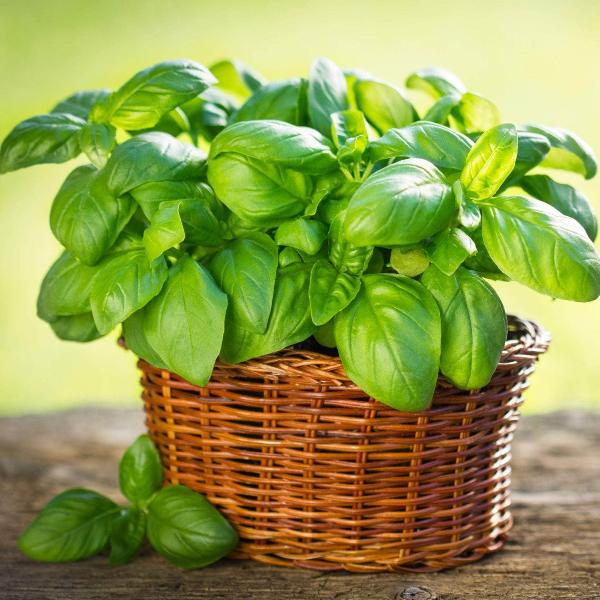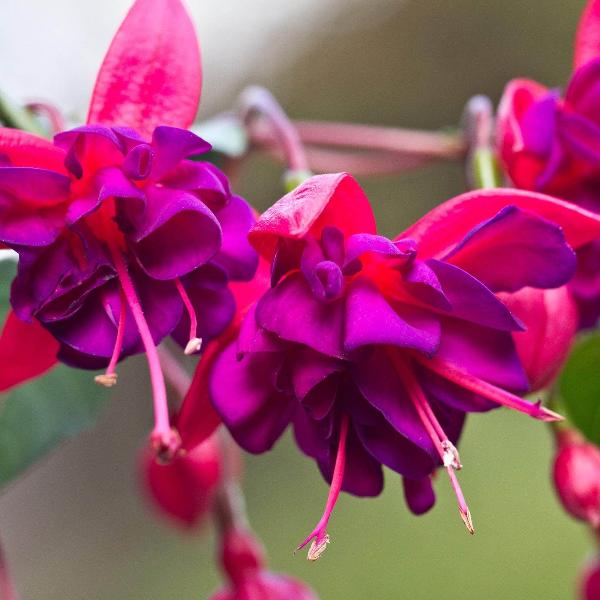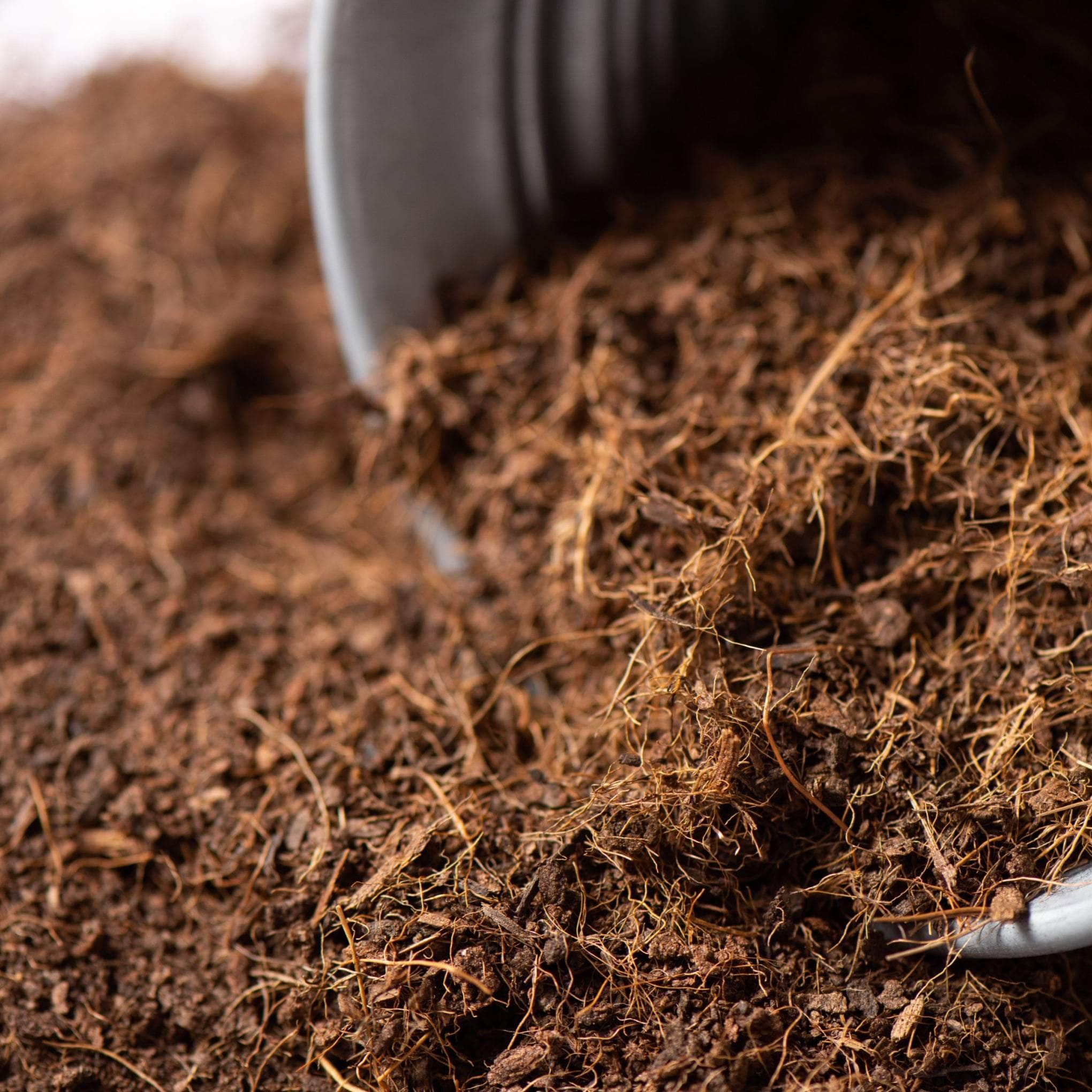The Comprehensive Guide to Growing and Caring for Wallflowers
Welcome to our comprehensive guide on how to grow and care for your wallflowers, a favourite amongst gardeners worldwide. Whether you're a seasoned gardener or a green-fingered novice, this guide will provide you with all the information you need to cultivate these vibrant, scented flowers successfully.
From understanding the different types of wallflowers to mastering the art of planting and caring for them, we've got you covered. We'll delve into the specifics of growing wallflowers from seed, tackling common pests, and maximising flower cultivation.
So, whether you're planting in full sun or partial shade, preparing for an early spring bloom or nurturing a perennial variety, this guide is your go-to resource. Let's embark on this gardening journey together, and transform your garden into a riot of colour with wallflowers.
Stay tuned for a detailed grow guide that's as colourful and captivating as the wallflowers themselves.
Understanding Wallflowers: An Introduction

Dive into the world of wallflowers, a plant type that's as intriguing as its name. Wallflowers are not just another pretty face in the garden; they're a perennial hybrid that offers a captivating blend of vibrant colours, sweet fragrance, and versatile growth patterns. Let's embark on a journey to understand these charming plants better.
What are Wallflowers?
Wallflowers are an exquisite range of flowering plants that boast vibrant colours and a tantalising scent. Mostly admired for their distinct four-petalled blooms, they come in an eye-catching palette of colours ranging from fiery red, brilliant blue, vivid yellow to delicate purple. Alongside their visual appeal, wallflowers are also prized for their sweet fragrance, a trait that makes them excellent additions to any garden, from rock gardens and borders to container gardens.
This splendid plant is often categorised as a biennial or a perennial, and its growth varies from type to type. Biennials generally devote their first year to root and foliage establishment, flowering in their second year. On the other hand, perennial wallflowers offer recurring blooms for several years, demanding minimal care in return.
Most commonly known variants of wallflowers include 'E. cheiri Sunset Apricot', 'Tom Thumb', 'Winter Passion', 'Winter Orchid', and 'Walberton’s Fragrant Sunshine'. Each variety is distinctive, offering different colours, blooming seasons, and growth patterns.
Types of Wallflowers
E. cheiri 'Sunset Apricot': A biennial, fragrant plant blossoming with yellow-apricot flowers.
'Tom Thumb': A compact variety with vibrant blooms, ideal for borders, containers, and adding early-season colour to gardens.
'Red Jep': This hybrid offers a shift from rich red to purple flowers – a perennial option with a lovely scent.
E.linifolium 'Bowles’s Mauve': Blessed with abundant mauve flowers, this variant is a favourite amongst perennial wallflowers.
'Winter Passion' and 'Winter Orchid': Both fall under the exceptional 'Winter' series of compact hybrids, known for large, aromatic flower spikes.
'Walberton’s Fragrant Sunshine': This patented perennial hybrid stands out with compact, bushy orange blooms.
Our understanding of this vibrant plant’s varieties helps us appreciate each wallflower plant's unique attributes. Whether hybrid, perennial, or biennial, there's a wallflower for every preference.
How to Plant Wallflowers

Planting wallflowers can be a rewarding experience, especially when you see them bloom into vibrant colours. This section will guide you through the process of planting wallflowers, from choosing the right location to the actual planting process.
Whether you're looking to plant perennial wallflowers or start your garden from seed, these tips will help you create a beautiful wallflower display.
Choosing the Right Location
To successfully grow wallflowers, the first critical decision is picking the appropriate location. Wallflowers thrive in full sun, so scout a spot in your garden which guarantees sufficient daylight.
Next, it's about the soil. Wallflowers have a preference for well-drained, neutral to alkaline soil. Heavily clayey or waterlogged conditions can lead to root rot and other problems.
Planting Process Explained
Submerge the roots in water: Once you receive your wallflower (perennial or from seeds), ensure the roots are standing in water for up to an hour. This is integral to hydration, and don't worry if you spot any green/yellow mutations, they will recover.
Soil preparation: Prepare your plant bed by making sure it's free of weeds. Infuse compost or manure into the soil, add a balanced fertiliser, and break it down to a crumb-like texture.
Plant in Autumn: Wallflowers are best to plant out in the autumn. Avoid planting when soils are overly wet or frozen.
If you're planting in containers or baskets, use water-retaining gel granules and slow-release fertiliser with the compost. This will save watering and feeding time later in the growing season. Water regularly until fully established.
Caring for Wallflowers

Caring for wallflowers is a rewarding endeavour, as these vibrant plants can add a splash of colour to any garden. This section will delve into the specifics of wallflower care, from understanding their light and temperature needs to their watering and soil preferences. We'll also touch on the topic of fertilising your wallflowers to ensure they thrive.
Light and Temperature Requirements
Wallflowers, by nature, are lovers of sunlight and cool climate conditions. They do remarkably well in full sun and moderate temperatures, making them a stellar choice for gardens which bask in regular sunshine. In southern regions, where intense heat can persist, a location providing afternoon shade would be beneficial to shield them from harsh sunlight.
Wallflowers prefer a cooler climate, specifically temperatures in the range of 15°C-18°C. So, be wary of periods when temperatures soar, as the plant seeds do not germinate well under hot conditions. During such times, it's worth considering delaying your sowing sessions until temperatures drop to normal levels. This kind of care will ensure your wallflowers put on a brilliant display of early spring blooms.
Watering and Soil Preferences
Caring for your wallflowers entails understanding their preference for watering and soil conditions. Wallflowers are drought-tolerant once fully established and do not necessitate frequent watering.
The soil should ideally be well-drained, medium to dry, to ensure the roots of the wallflowers are not left sitting in standing water, as this can trigger rapid plant decline and potentially cause plant death.
A unique feature of wallflowers is their adaptability to alkaline soils with a pH range of 7.0 to 9.0. Care should be taken to avoid overly wet areas in your garden when selecting the perfect spot for your wallflowers.
Fertilising Your Wallflowers
Caring for your wallflowers involves providing the right amount of nutrients to the plant. This usually comes in the form of fertiliser. Wallflowers primarily grow in alkaline soil, which is typically packed with essential nutrients. Therefore, it’s not necessary to fertilise your wallflowers regularly.
Most of the plants' growth is achieved during the summer and autumn of their first year, and they are known to thrive even in poor soil. This ability to bloom in less fertile ground lessens the need for additional supplementation.
However, if your wallflowers are not growing as expected or their leaves are discolouring and wilting, a light application of a balanced fertiliser could help restore them. It's imperative to carefully follow the instructions on the pack to avoid over-fertilisation.
Growing Wallflowers from Seed

Embarking on the journey of growing wallflowers from seed? This detailed grow guide will walk you through the process, from seed preparation to nurturing young plants. With a little patience and care, you'll soon be rewarded with a vibrant display of these charming blooms.
Preparing the Seeds
Before initiating the sowing process, the first step is to properly prepare the seeds. They should be unpacked immediately upon receipt to allow for much-needed light exposure after being contained in a dark box during shipping. Any signs of slight yellowish foliage are normal and shouldn't cause any alarm.
Subsequent to unpacking, the seeds must be rehydrated. This is achieved by standing the roots in water for up to an hour. This crucial step ensures the seeds are sufficiently hydrated before they are planted into soil, bolstering their chances of sprouting into healthy plants.
Sowing Process
The sowing process for wallflowers is simple yet needs some care. Let's take a quick overview of the steps.
Decide the type of Wallflower: Different wallflowers have varied sowing times. Choose your type, noting the specific sowing period.
Sowing undercover: If you plan to grow from seed undercover, grab your seed tray. Sow your seeds thinly, covering them with a delicate layer of compost. Once they're big enough, prick them out into 3in pots.
Direct sowing: If your preference is sowing directly outdoors in late spring, ensure you sow in rows. Post germination, thin out plants leaving a 6in gap and then transplant in autumn to the location of their growth.
Remember to water regularly, label your plants to keep track, and pinch out the growing tips to enhance their bushiness. Growing wallflowers from seed can be a rewarding job when done right. So, invest your time and care into this process and watch your wallflowers bloom beautifully.
Caring for Seedlings
After you've successfully sowed your seeds and notice the emergence of young wallflower seedlings, the real care begins. The tender plants require a certain level of attention and diligence. To ensure they grow into healthy, blooming flowers, essential care protocols need to be followed.
Firstly, keep a constant check on the moisture content of the soil. While the plants are in their nascent stage, regular hydration is crucial. Water them frequently if the weather tends to lean towards the drier side. However, refrain from water-logging the soil. Wallflower seedlings thrive best when the soil is well-drained and not overly soggy.
Common Problems and Solutions

Growing wallflowers can be a rewarding experience, but it's not without its challenges. From identifying and dealing with pests and diseases to addressing growth issues and ensuring your wallflowers survive the winter, there are several aspects to consider. Let's delve into these common problems and their solutions to help you cultivate healthy, vibrant wallflowers.
Identifying Common Pests and Diseases
Flea Beetles, visibly identifiable by their unique jump when disturbed, are common pests of wallflowers. They feed on leaves, resulting in damaged foliage and hindered growth.
Aphids appear as minute green bugs on the leaves and stems, secreting a sticky substance and causing the growth to become stunted.
Cabbage Worms, caterpillars that feed voraciously on wallflower foliage, leaving large holes in their wake.
Early identification and quick action are key in dealing with these pest and diseases.
Dealing with Growth Issues
Growing wallflowers can sometimes pose challenges due to certain growth issues. It could be stunted growth or unusual wilting. Often, these issues emanate from either poor soil conditions or irregular watering habits.
It's essential to ensure your wallflowers are planted in well-draining, fertile soil to promote healthy new growth. Enhance the soil's richness by regularly adding compost or manure.
In addition, consistency is key in watering wallflowers. Avoid over-watering to prevent the roots from rotting, but also ensure the plants don't dry out. Striking the right balance is vital for the prosperity of your wallflowers.
Overwintering Wallflowers
Overwintering wallflowers is a task that often brings up challenges for many gardeners. While they perform well within their hardiness range, these plants might drop their leaves when the weather starts to grow cold. For those cultivating wallflowers outside of the hardiness range, it's recommended to treat them as annuals to ease their survival through the winter.
However, even inside their preferred climate zone, wallflowers can struggle against particularly wet and frigid winter conditions. It's important to provide them with well-drained soil and protection from the wind for optimal growth. If the winter is excessively cold or wet, a smart practice would be to shield your wallflowers using horticultural fleece or a cloche.
New growth in spring is something every grower anticipates. However, young shoots can be easily burned by frost. Should this unfortunate situation occur, encouraging your wallflowers to grow again is as simple as pinching off the tips or trimming back to stimulate new growth. By following these steps, you can expertly navigate the common winter-related complications that often arise while growing wallflowers.
Maximising Flower Production

In the quest to maximise flower cultivation, understanding the unique needs of wallflowers is key. This section will delve into the best practices to encourage a vibrant bed display of blooms.
We'll explore how to get wallflowers to reach their ultimate height and produce a profusion of flowers. Let's dive in.
Encouraging Blooms
Maximising the flower production of wallflowers, the staple of any vibrant bed display, largely hinges on suitable growing conditions. Bathing in full sun, these plants show an astounding generosity in bloom production.
Regular pruning plays an instrumental role as well. Cutting back will encourage a second sprout of flowers, pushing the plant to reach its ultimate height. Just remember - absolutely no fertiliser. Any attempt to force the plant could curb flower cultivation.
Ultimately, each wallflower is its own entity; tuning into its unique needs is the true secret to transforming your garden with a prolific bed plant display.
Pruning for More Flowers
To enhance the flower production of your wallflowers, thoughtful pruning plays an essential role. Timely and proper pruning helps to shape up the wallflowers, especially when they start to look leggy, which is a sign of neglect or mismanagement.
Pruning should be done after they bloom, predominantly during the late spring or early summer for optimal results. This requires cutting back at least half of the stems, which not only assists in reshaping the plant but also paves the way for dense growth.
The height and display of your wallflowers greatly depend on this practice. So, give your bed plants the best care possible, and they're sure to reward you with a lavish display of blossoms.
Caring for your Wallflowers After Blooming
The post-bloom phase of wallflowers can often be a challenging time. Let's discuss some effective strategies to manage them. After wallflowers have put on a spectacular bed display and reached their ultimate height, it's natural to wonder what's next. Much like other perennials, wallflowers continue to live.
Some may see post-blooming wallflowers as less attractive and opt to relocate them. However, with the right care, they can continue to add vibrancy to your garden. You may even cut flowering shoots and store them temporarily elsewhere, preparing for another splendid season. Wallflowers can embezzle the flavour of faded velvets and silks, enriching your garden's aesthetic.
Overall, caring for your wallflowers after blooming requires understanding the plant's biology and tweaking your gardening strategy accordingly. With proper care, these beauties can continue to blossom, vibrantly painting your garden for years to come.
Embrace the Beauty of Wallflowers in Your Garden

In conclusion, wallflowers are a fantastic addition to any garden, offering a vibrant splash of colour and a delightful scent. Whether you're a seasoned gardener or a beginner, the process to plant wallflowers and care for them is straightforward and rewarding.
With their ability to thrive in full sun or partial shade, and their adaptability to various soil conditions, they are a versatile choice for any garden.
Remember, the key to a successful wallflower plant is understanding its needs and providing the right conditions. From sowing the seeds to maximising flower cultivation, every step is crucial in ensuring a healthy and vibrant wallflower display.
So, why wait?
Start your wallflower journey today and transform your garden into a colourful and scented paradise. With this detailed grow guide, you're well-equipped to grow and care for these beautiful plants.
Happy gardening!










